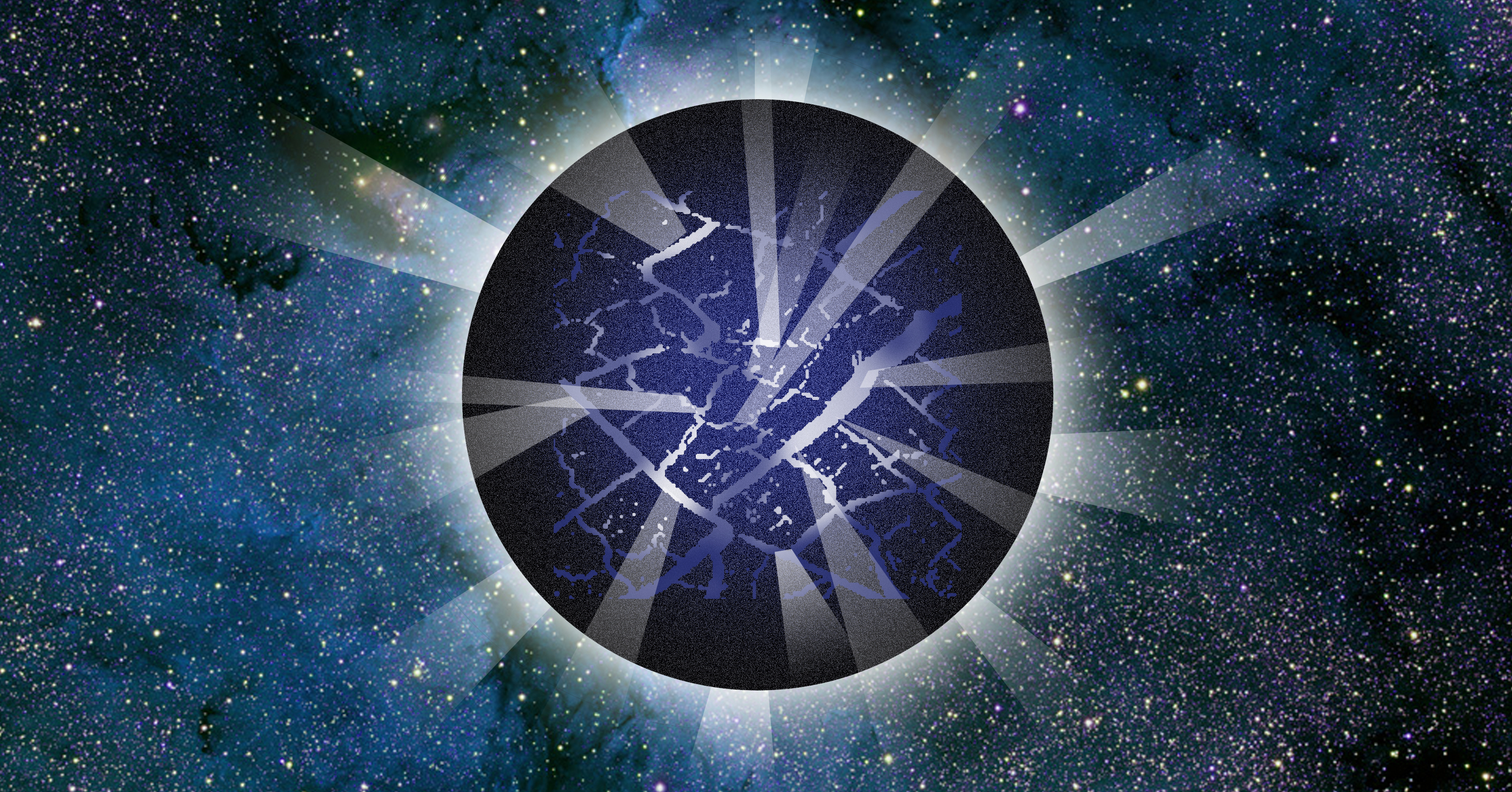June 5, 2006
Scientists have discovered how to predict earthquake-like events in pulsars. These are explosive episodes that likely crack a pulsar's dense crust and momentarily bump up its spin rate. Using NASA's Rossi X-ray Timing Explorer, the team has tracked about 20 "starquakes" on one particular pulsar over the past eight years and uncovered a remarkably simple, predictive pattern. For a pulsar called PSR J0537-6910 the time to the next quake is proportional to the size of the last quake. With this simple formula, scientists have been able to turn the Rossi Explorer to the pulsar a few days before the quake to watch the event unfold. Dr. John Middleditch of the Los Alamos National Laboratory in Los Alamos, N.M., led the discovery and presents this finding today at the American Astronomical Society Meeting in Calgary. "By monitoring the pulsar spin rate and changes in the spin, we can pin down a starquake event to within a couple of days," said Middleditch. "These and other details have helped to simplify what has, until now, appeared to be a bewildering assemblage of facts about starquakes in pulsars. If only predicting earthquakes were this straightforward." Middleditch's colleagues include Drs. Frank Marshall and Will Zhang of NASA's Goddard Space Flight Center in Greenbelt, Md.; Dr. Eric Gotthelf of Columbia University in New York; and Dr. Daniel Wang of the University of Massachusetts, Amherst. A pulsar is the dense remains of an exploded star once several times more massive than our sun. A pulsar contains about a sun's worth of mass compacted in a sphere only about 20 miles across. A pulsar is so dense that a teaspoon of its material would weigh two billion tons on Earth. The pulsar is so named because from our perspective it pulses with radiation from its two magnetic poles as it spins, sending two lighthouse-like beams through space. PSR J0537-6910 is located in a 4,000-year old supernova remnant called N157B in the crowded Tarantula Nebula of the Large Magellanic Cloud, a small satellite galaxy near our Milky Way galaxy. This is about 170,000 light years away and visible in the Southern Hemisphere. PSR J0537-6910 is known for its frequent quakes, which scientists call glitches. Pulsars are born spinning but gradually slow down. During a glitch, the spin rate increases slightly. PSR J0537-6910 spins at a rate of about 62 times per second, or 62 hertz. During a glitch, this pulsar's spin jumps up as much as one cycle every 25 seconds, a greater gain than what is seen in any other pulsar. Then the pulsar proceeds to slow down again. After about ten glitches since monitoring began in 1999, the scientists saw a pattern. The amount of increase in spin with each glitch could be translated directly into the number of days until the next glitch. Larger glitches meant a longer wait until the next one. The predictive nature of glitches in PSR J0537-6910 is so strong that it firms up the leading theory on what causes glitches. Pulsars have a solid crust, about a kilometer thick, with a neutron superfluid in its lower regions, which also permeates into the rest of the interior. The crust's spin slows down more quickly than its own superfluid. At some point, the differential rotation reaches a tipping point. A glitch occurs when the superfluid transfers its angular momentum to the crust, bumping up its speed. That maximum differential rotation between superfluid and crust in PSR J0537-6910 appears to be one cycle every 25 seconds. Almost all other pulsars, including the famous Crab pulsar, which spins more slowly and has fewer glitches, do not exhibit much of a predictive pattern. Predicting glitches can be fruitful because the biggest glitches likely entail a massive cracking of the pulsar surface and a terrific outpouring of energy. By studying these larger and rarer events, scientists can gain key insight into the nature of pulsars. Pulsars are laboratories of extreme gravity, exhibiting energy and pressure far beyond the reaches of humanmade experiments, and the study of pulsars might lead to a better understanding of fundamental physics. "A month ago we were watching the pulsar get the 'jitters' before the big quake," Middleditch said. "Then, by May 7th, the big one had happened. We can only predict one glitch at a time." Middleditch noted that his team also found evidence the pulsar's magnetic pole is migrating away from its rotation axis by a degree every two centuries, or a few feet per year. Although a known feature on Earth, where the magnetic north pole is a moving target many kilometers from the North Pole, this is the first strong case for magnetic pole migration on a pulsar. For a visualization of what a pulsar undergoing a starquake might look like, see this computer animation.(Credit: NASA)
If you have a question about RXTE, please send email to one of our help desks.
|



